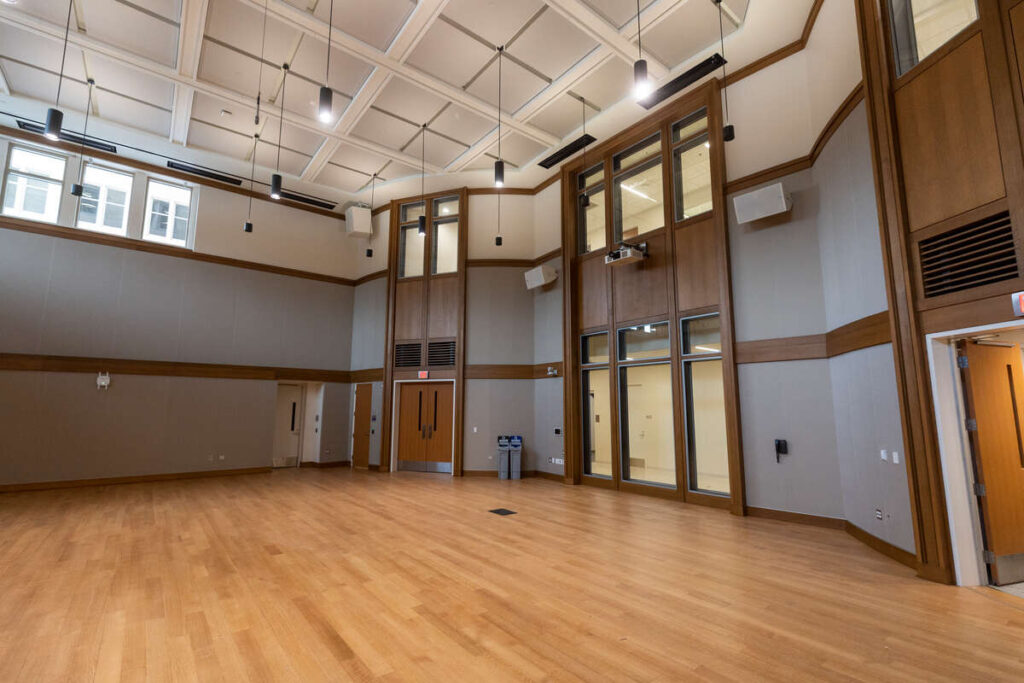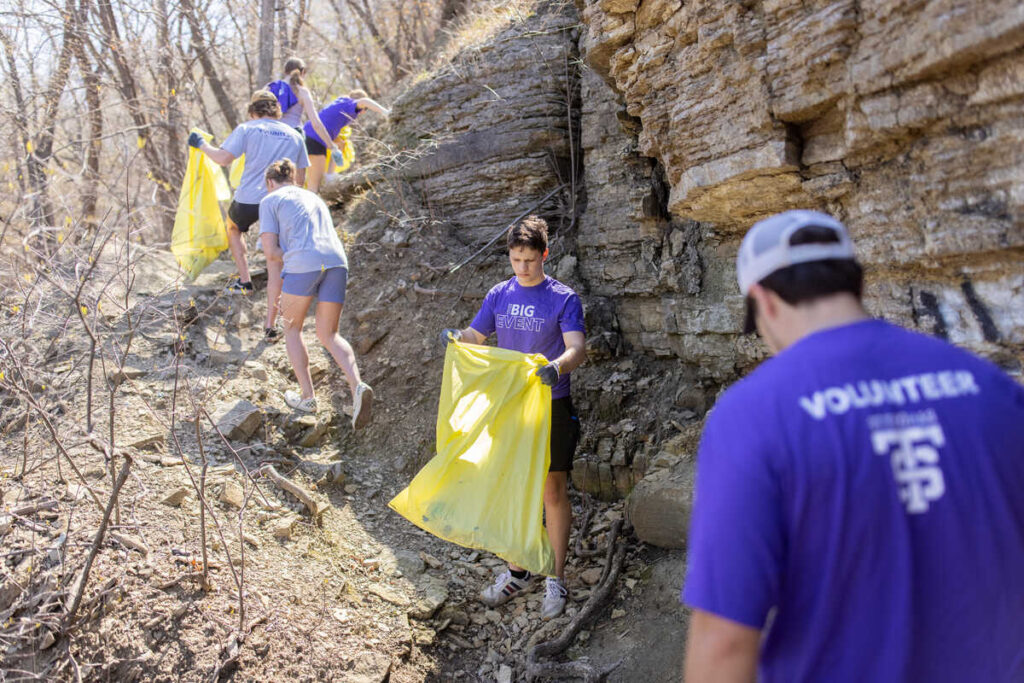Theo. 101 in Rome
Through careful reading of a core of common texts, a variety of field trips and guided tours, as well as written assignments, students are expected to attain a basic understanding of human experience as interpreted by major areas of Christian theology, including revelation, God, creation, Jesus, and the Church. Emphasis will be placed on the city of Rome, its role in Christian history, and the cultural expressions of Christianity found in its environs.
This version of the intro course will also pay special attention to political and cultural aspects of the Christian tradition, and to questions of religious life and practice, with a comparative focus between Roman and European traditions in Christianity and the North American experience of Christianity.
In addition to Rome, students visit Pompeii, Naples, Assisi, Siena, Florence, and Orvieto. Dr. Faggioli is from Italy; his first language is Italian. Students studying Italian at St. Thomas will use their Italian in this course, but having the language is not a prerequisite.
The church in Latin America: Guatemala
Dr. Gerald Schlabach will be leading a class in Guatemala on “The Church in Latin America” in January. “This is the best thing I do as a professor,” says Schlabach, who was awarded the university’s Service-Learning Faculty Award in 2012 thanks largely to leading or co-leading the class roughly every two years since 2000. “Guatemala itself makes a great co-professor,” he notes, and UST benefits from longstanding relationships with local partners. Through its VISION program, the university has been sending students to San Lucas Tolimán to work in projects organized by the Catholic parish there for two decades, and the course incorporates many elements of the VISION program. Drawing on eight years living and working in Central America earlier in his career, Schlabach has developed additional partnerships in Guatemala City and Santiago Atitlán.
While course work engages the history and contemporary challenges of churches throughout Latin America, Guatemala provides a poignant case study. In addition to lectures and readings, students have opportunities for site visits, field research, and practical experiences that allow them to become immersed in Guatemalan society in a short amount of time. They are able to observe various models of church engagement with the needs of the Guatemalan people, from traditional forms of popular Catholic piety to Pentecostalism to liberation theology. As students develop personal relationships with the Maya of the Guatemalan highlands who host them, the oppression of the Maya over the five centuries since the Spanish Conquest invites special attention. The Maya provide a vivid example of the struggles of many other marginalized groups in Latin America. Students inevitably encounter the theological question of how best to “inculturate” the Christian gospel in diverse cultural settings, thus respecting the cultural values and strengths that are indigenous to a people.
Along the way, the course introduces students to the politics, history, and economy of Guatemala in order to join with Latin Americans in reflecting theologically on the meaning of the gospel in its historical context. Theological topics explored often include evangelization, christology, sin, martyrdom, poverty, the nature of the church, the Eucharist, and the Church’s role in both the Guatemalan peace process and in the defense of human rights.
AIDS, Apartheid, and the Arts of Resistance
Fr. Richard Cogill and Dr. Kimberly Vrudny are pairing up to offer “Theological Reflection on AIDS, Apartheid, and the Arts of Resistance” during January Term, 2015. Through analysis of works of artistic resistance, students in this course will examine the interrelationships between two catastrophes of the modern era in South Africa: apartheid and AIDS, especially attentive to the impact of the correlation between the two on the lives of women. Students will approach works of art with theological lenses to explore such themes as lament, imago Dei, prophecy, theodicy, memory, covenant, forgiveness, reconciliation, and hope. Artistic examples will be drawn from the visual arts, music, liiterature, and film. Students will learn about the arts of resistance through studio tours, guest lectures, and site visits in Johannesburg and Cape Town and their surrounding areas.
While this is a service-learning course, we are not on a mission trip—not as mission trips are typically conceived of, at any rate. We are going in order to encounter South Africans—people who have survived a tragic chapter in history and who are imagining a future that is radically inclusive. We are going to learn something about theology from them, as they apply concepts like forgiveness, reconciliation, and hope in public ways.
When possible along the way, we will be working with our friends at a number of organizations. By cleaning a shelter for homeless people, by giving English language placement exams at a welcome center for refugees, and by shadowing community health workers, we will offer a few hours and a few resources in a gesture of solidarity, in order to live into a different imagination about how to be human in our interdependent world. To follow our journey to the southern tip of Africa, and to consider ways to accompany us, visit our blog: https://ustsouthafrica.wordpress.com.
Islam in Turkey
Dr. Adil Ozdemir and Dr. Kelly Wilson are taking students to Turkey in January. It is no mere coincidence that President Obama chose Turkey as the first Muslim country to visit and as a site for an important address to what is often called the Islamic world. As it seeks its soul, its identity, between the European Union and the Islamic world, Turkey is both a battleground and a learning ground. New York Times reporter Stephen Kinzer declares that it is poised to be “the most audaciously successful nation of the twenty-first century.”
Turkey stands in a pivotal position, with the Bosphorus Bridge its great symbol of the geographical, politicala, and social spanning of both Europe and Asia. Islam is central to both the political significance and the mystery of Turkey. For centuries, visitors have been struck with wonder at its remarkable tauheed, or unity, tolerance and hospitality.
This course familiarizes students with the basic beliefs and practices of Islam in Turkey, including worship, family life, intellectual, and artistic traditions. We will perceive Islam from both “insiders’ perspectives” (reading the Qur’an and works on the Prophet Muhammad and challenges facing Muslims in contemporary Turkey), and from “outsiders’ perspectives” (reading British, American, and secular Turkish writers who are imagining or describing Turkey and Muslims).
Site visits include mosques, churches, madrasas, palaces, museums, ancient towns, volcanic formations, deep valleys and rock dwellings in Cappadocia, Sultanhan Caravanserai, Mevlana Museum, Selimiye Mosque, Aladdin Mosque, Konya Karatay Ince Minare, Karatay Madrasa in Konya, Ephesus in Selcuk, Muradiye, Burda Koza Han, Grand and Green Mosques in Bursa, Bursa center, Edirne Selimiye Mosque, Eski Camii, Beyazit Medrese. The stunning Blue Mosque and historical Eyup Sultan Mosque, the world-famous Byzantine Hagia Sophia, lavish Ottoman Topkapi Palace, and the Grand Bazaar in Istanbul.
To experience Turkish friendship, we also engage in interfaith and intercultural dialogue over dinners in the homes of local families.
From “theology matters,” a newsletter of the Department of Theology. Subscribe here.






